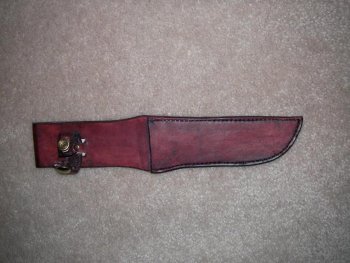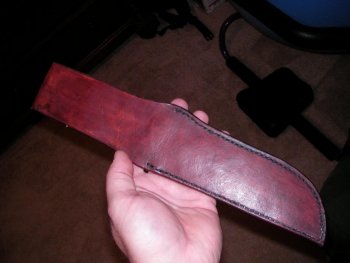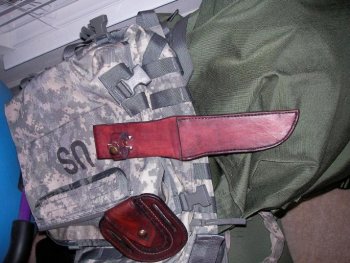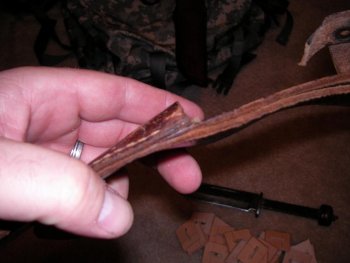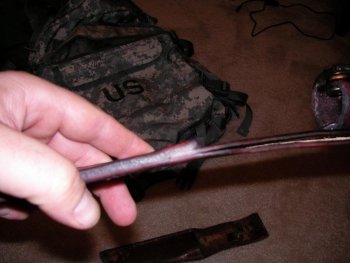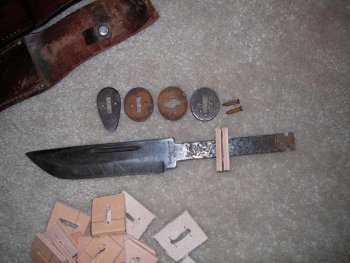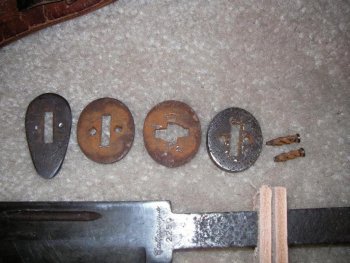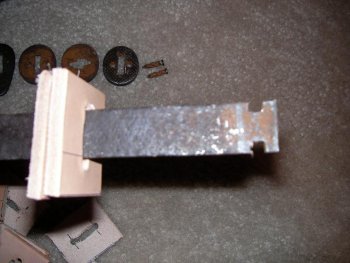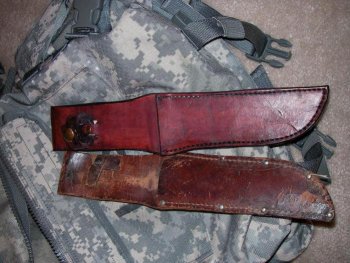Thanks Dave,
Dave,
Thanks for the valuable feedback and positive response. I feel the same way about the fold needing to feed into the mouth of the sheath a little more. But it is almost an exact copy of the sheath that the knife came with. I did not want to stray to far away from how the original looked. There are three differences between the sheaths.... Old military sheath was left handed, had rivets in it and was not dyed (that I can tell). The new one is for a right hander, is dyed and has no rivets.
In my next sheath, I will apply what you told me about using small wedges to open up the mouth of the sheath.
On my dying job, I had no idea what I was doing. I just used a small paper towel and went to town with it. I could tell that the color was thicker looking in some areas than others. Just didnt know how to go about fixing that on my next one. I will "deglaze" the leather next time before applying dye. I will also do some research on that and figure out exactly what is happening with that leather when I do that.
As far as applying dye to the inside and back of my leather sheaths, it just doesnt make sense in my book to have the front all pretty then turn it over and see white/tan leather. I think the only thing that would change that is if maybe die would run onto clothing or something like that. But I am sure I will change my mind on a lot of the way I am doing things so far as I get more experience.
Again, thanks for the feedback. Look forward to more comments and observations.
Bryan
PS I have added pics of both the knife and the old sheath. I forgot to mention that this knife served in New Guinea. I guess that after looking at it, the sheath was dyed. Ooops.

